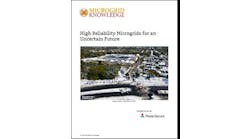A study of some recent World Bank projects shows that factoring in energy efficiency considerations can help accelerate global efforts to deliver modern energy services to those who need it most. Communicating the benefits of integrating efficiency into energy access projects, encouraging wide use of quality energy efficient products, and rethinking subsidized energy tariffs are key actions needed.
Nothing helped solar electricity kits for homes succeed in Bangladesh as much as the light emitting diodes (LEDs) people used with them.
The more energy efficient lighting source coupled with the easy-to-use solar kits led to longer, more reliable periods of electricity supply at a much lower cost. That meant 18.5 million Bangladeshis have been able to adopt the combination to power their homes.
The program also serves as an example of how factoring energy efficiency considerations into development projects can help accelerate efforts to make modern energy services available to those who need it most.
A new report entitled “EA + EE: Enhancing the World Bank’s Energy Access Investments Through Energy Efficiency,” identifies this nexus between energy efficiency and energy access. The report, which examined eight recent World Bank energy access projects, also recommends ways in which energy efficiency measures can amplify the impact of future projects that aim to achieve universal energy access.
That boost could be critical to achieving Sustainable Energy for All’s (SE4All) objective of making reliable, affordable electricity available to everyone in the world by 2030.
Currently, about 1.1 billion people globally don’t have access to electricity. That puts them at a significant economic and social disadvantage. Lack of electricity means children cannot study at home, productive hours for adults are cut short and women and children often cannot go out independently at night where there are no street lights.
Technology like solar home systems, small wind turbine systems and renewable mini- and microgrids can help change that. On the supply side, greater energy efficiency means there is more electricity to deliver to a larger number of households and businesses.
Besides being considerably more energy efficient than traditional fuels, it is also one of the best ways to take electricity supply to people who are not serviced by traditional grid supply.
Such “off-grid” solutions can be cost-effective and reliable and serve as an intermediate solution for those waiting for grid-based electricity supply.
The report recommends ways for the World Bank to maximize the impact of future energy access projects. Those include making energy efficiency a cornerstone of projects, communicating the benefits of the nexus between energy efficiency and energy access and setting tangible project indicators and targets and developing tools to help countries procure more energy efficient products.
The report also recommends rethinking subsidized energy tariffs, educating consumers on energy efficient behavior and prioritizing markets where market structure does not currently exist to take advantage of energy efficiency as part of energy access work.
The World Bank commissioned the Collaborative Labelling and Standards Partnership (CLASP) to take a fresh look at eight energy access operations and issue a report on how energy efficiency can help achieve better outcomes in access-related initiatives. This blog orginally appeared on The World Bank website.






